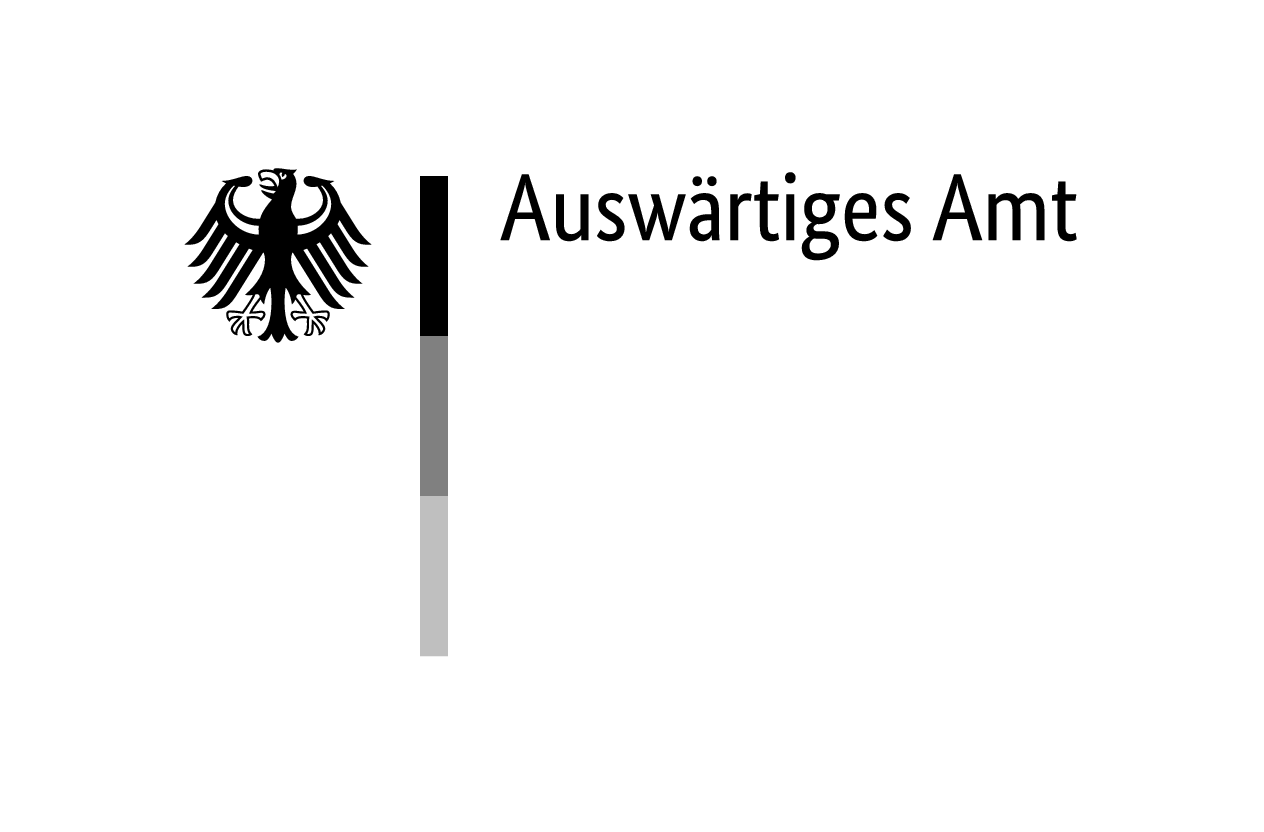From 1940 to 1944, there was a so-called bricklayer school in the Auschwitz concentration camp, where young male prisoners were trained to be used for forced labour. The names of 305 young Sinti and Roma who were transferred there from Camp Section BIIe in Auschwitz-Birkenau are known.
Installation
The so-called bricklayer school in Auschwitz has so far received relatively little attention in the literature, particularly in connection with the persecution of Sinti and Roma.1On the bricklayer schools in particular: Buser, Überleben, 165–179; Jastrzębska, Die Maurerschule; Steinert, Holocaust, 216–227. Its establishment was ordered on 1 November 1940 by a letter from the inspector of the concentration camps, Richard Glücks (1889–1945), who demanded ‘the fastest possible training of a large number of prisoners in the bricklaying trade’ for construction work within the camp; care was to be taken when selecting the prisoners that they were ‘likely to remain in the camp for a long time’.2Quoted from: Jastrzębska, Maurerschule, 310. Similar facilities existed in other concentration camps. For example, bricklayers were also trained in Buchenwald,3Albertus, Verbrechen, 29–33. stonemasons in Mauthausen4Perz, Kinder und Jugendliche, 79f. and roofers in Majdanek.5Arolsen Archives (ITS), 82115889, WVHA to KGL Lublin, prisoner training – prisoner instructors, 4 March 1943. The training was also intended to provide the SS (Schutzstaffel) with a sufficient number of qualified forced labourers for the major construction projects planned in the German Reich and in the occupied territories of the Soviet Union after the end of the war.6Buser, Überleben, 166.
The first prisoners to be trained, who were predominantly (perhaps even exclusively) Polish youths, were initially housed in Block 3 and later in Block 5 of the main camp, while the practical training took place on the square in front of Block 4. The prisoners also received theoretical instruction in German. According to a survivor, 300 young people were initially trained.7On the following: Jastrzębska, Maurerschule, 309–317. The first training course ended in the spring of 1941 without any further courses following. In the main camp, the new bricklayers had to help convert an ammunition store into a crematorium, which was also used for executions and as a gas chamber; they also had to work on the construction of the gas chambers and crematoria in Birkenau.
The second verifiable bricklayer school was founded in Birkenau on 16 July 1942, initially for 302 trainees. The number of ‘students’ grew to 712 by August 1942, before the institution was moved back to the main camp on 29 September. Of the 522 prisoners who were in the bricklayer school at this time, however, 321 remained in Birkenau for forced labour, while 201 moved to Block 7a of the main camp. Classes were now held in closed rooms; practical exercises took place in the attic.
The Prisoners of the Bricklayer School
A register of the school for the following months has survived. It was found and taken by former prisoner Louis Posner (born 1926) after the liberation of the Monowitz concentration camp, and he handed it over to the Simon Wiesenthal Center in Los Angeles, USA, in 1976.8Cf. the catalogue description of the Simon Wiesenthal Center, reproduced on the website of the United States Holocaust Memorial Museum: https://www.ushmm.org/online/hsv/source_view.php?SourceId=33030 [accessed: 13/06/2024]. The entries cover the period from 3 October 1942 to 1 June 1943, with a gap between 5 and 15 March 1943, and contain details of 974 prisoners. Some of them were recorded more than once, so that the book contains a total of 1 510 entries. Most of them were 16 to 19 years old, and there were also 52 prisoners aged between twelve and 15. Of these, 622 were Jews and 305 were Sinti and Roma. The first young person from the Sinti and Roma minority, Johann Waszkowski (also known as Jan Wackowski), born in 1925, was registered at the bricklayer school on 7 April 1943. The school reached its highest population on 14 April 1943 with 452 prisoners. Of the 974 young people, at least 202 were murdered in Auschwitz, 79 of them during their training period.
Training courses were held until the end of 1944, when the prisoners in the last training group (now housed in Block 13) were deported to Sachsenhausen concentration camp. They arrived on 27 November 1944.
According to historian Halina Jastrzębska, who analysed the bricklayer schools in Auschwitz statistically in detail in an essay published in 2009, 196 (64 %) of the 305 Sinti and Roma came from the German Reich (including Austria) and 81 (26 %) from the Protectorate of Bohemia and Moravia. The remaining ten per cent were Sinti and Roma listed as stateless, Roma with Polish or Croatian nationality and Roma whose nationality was recorded as unidentifiable.9Jastrzębska, Maurerschule, 320. As the surviving register only covers a few months and is also incomplete, it can be assumed that more than the 305 Sinti and Roma known by name passed through the bricklayer school.
Survival Conditions
There is no doubt that the transfer to the bricklayer school (which was linked to an escape from the appalling conditions in Camp Section BIIe) and the theoretical and practical knowledge taught there contributed to the survival of the young Sinti and Roma. Nevertheless, the image of the bricklayer school that prevailed in the literature for a long time seems to be overly positive. It was characterised by the predominantly positive descriptions of Thomas Geve (alias Stefan Cohn), born in 1929, whose autobiographical writings appeared from the end of the 1950s. Remarks such as ‘unique island of protection for young people’, ‘place of refuge’ or ‘asylum for boys where they could spend a few weeks in safety and learn a trade’ made the selections also mentioned by Geve and the sometimes brutal treatment of the children and young people fade into the background.10Geve, Geraubte Kindheit, 68, 71, 90f. In addition, some Jewish prisoners became victims of sterilisation experiments during their time at the bricklayer school.11Steinert, Holocaust, 223–227.
The duration of the courses apparently varied. Some survivors reported several months, others only a few weeks, during which basic skills were taught, including taking measurements, reading and making sketches and plans, digging foundations and building walls. The prisoners slept in three-storey bunk beds, on which each was allocated a bunk and a (clean) blanket. Each prisoner was also given a spoon and a set of dishes from which meals were taken sitting on benches at tables.
These living and working conditions generally described in the literature12See note 1. can be found in the testimonies of some Sinti and Roma. Rudolf W. (born 1927), for example, who attended the bricklayer school together with his brother, reported better food than in Birkenau. He remembered the wooden bed he slept in, but also that he was beaten a lot,13Bergen-Belsen Memorial, Interview with Rudolf W., 26 March 2003. while Antonin Hlaváček (born 1926) emphasised that he had to sleep in a room with 20 others in a three-storey bed with a straw mattress under a blanket.14US Holocaust Memorial Museum (USHMM), RG-50.444.0017, Interview with Antonin Hlaváček, 20 June 1997. Jan Holomek (born 1928), on the other hand, emphasised that the hygienic conditions and washing facilities were much better than in Birkenau. When he injured his eye, he received medical treatment and was allowed to watch the others in training for a while.15USHMM, RG-50.444.0004, Interview with Jan Holomek, 8 March 1997.
Otto Rosenberg (1927–2001) spent a short time at the bricklayer school, where he met some prisoners he already knew from the Berlin-Marzahn detention camp. In his autobiography ‘Das Brennglas’, he described the training as follows: ‘We carted sand, learnt how to mix cement and use trowel, how to place the stones, where to put the pail so that the whole thing looked proper, some tricks of the trade. Since then I know how to lay bricks.’16Rosenberg, A Gypsy in Auschwitz, 53.
Sebastian Daniel (born 1922) expressed similar sentiments, and also recalled that when he arrived, a wall that had just been completed by other students was torn down again and had to be rebuilt by his group. He learnt how to work with bricks and stones. He then worked outside the concentration camp together with Polish civilians, who were strictly forbidden to give anything to the prisoners. However, some of them disregarded the ban and threw the youngsters pieces of bread, which they gobbled down immediately. He also helped to build crematoria and watchtowers. Even worse than the SS guards were the Kapos from the bricklayer school, he recalled, who hit the trainees with belts and enriched themselves with food from their fellow prisoners.17USHMM, RG-50.444.0013, Interview with Sebastian Daniel, 18 June 1997.
Like other prisoners at the bricklayer school, Karl C. (born 1927) had to work outside the grounds where the school was located during the training period. Among other things, he helped to pour concrete for the washrooms in Camp Section BIIe.18Lower Saxony Memorials Foundation, Celle, ZNW Collection, interview with Karl C., 27 January 1989. Rudolf W. was employed in the construction of barracks buildings;19Bergen-Belsen Memorial, Interview with Rudolf W., 26 March 2003. Jan Holomek had to repair roofs, among other things.20USHMM, RG-50.444.0004, Interview with Jan Holomek, 8 March 1997. What all the survivors had in common was that sooner or later they were transferred to other camps, including Buchenwald, the Dora and Ellrich satellite camps, which were part of the Mittelbau-Dora concentration camp, and Bergen-Belsen.
Chances of Survival
Did the training at the bricklayer school help them survive? As part of a study on forced child labourers, the names of the 162 Sinti and Roma who were included in the above-mentioned register and who were born in 1925 or later were sent to the office in the Düsseldorf district government that maintains the register of all compensation proceedings under the Federal Compensation Act (the Federal Central Index). According to this office, of the 162 Sinti and Roma whose names were listed in the register of the Auschwitz bricklayer school, 66 have personally applied for compensation, which means that they survived Auschwitz and the genocide.21Correspondence between the author and the Federal Central Index in November and December 2022. However, the number of survivors among the 162 Sinti and Roma was higher, as only 64 per cent of the Sinti and Roma in the register of the school came from the German Reich, including Austria. Those from Austria were unable to apply for compensation in the Federal Republic, as were the approximately 36 per cent of Sinti and Roma who lived outside the borders of the Germany of 1937. And finally, the Federal Central Index contains no information on Sinti and Roma who lived in the German Democratic Republic (GDR) after 1945. Taking this into account, it is probably reasonable to estimate that perhaps 70 per cent of the prisoners trained at the bricklayer school survived, while the majority of the Sinti and Roma deported to Auschwitz-Birkenau were murdered. Among the latter were Eduard Rose (1930–1943), one of the youngest students of the bricklayer school, as well as the two students Albert Bernhardt and Rudolf Stein, born in 1924, who attempted to escape from Auschwitz but were captured. They were subsequently imprisoned in the dreaded bunker of Block 11 and shot on 22 May 1943 at the ‘death wall’ between Blocks 10 and 11.22Jastrzębska, Maurerschule, 336.




